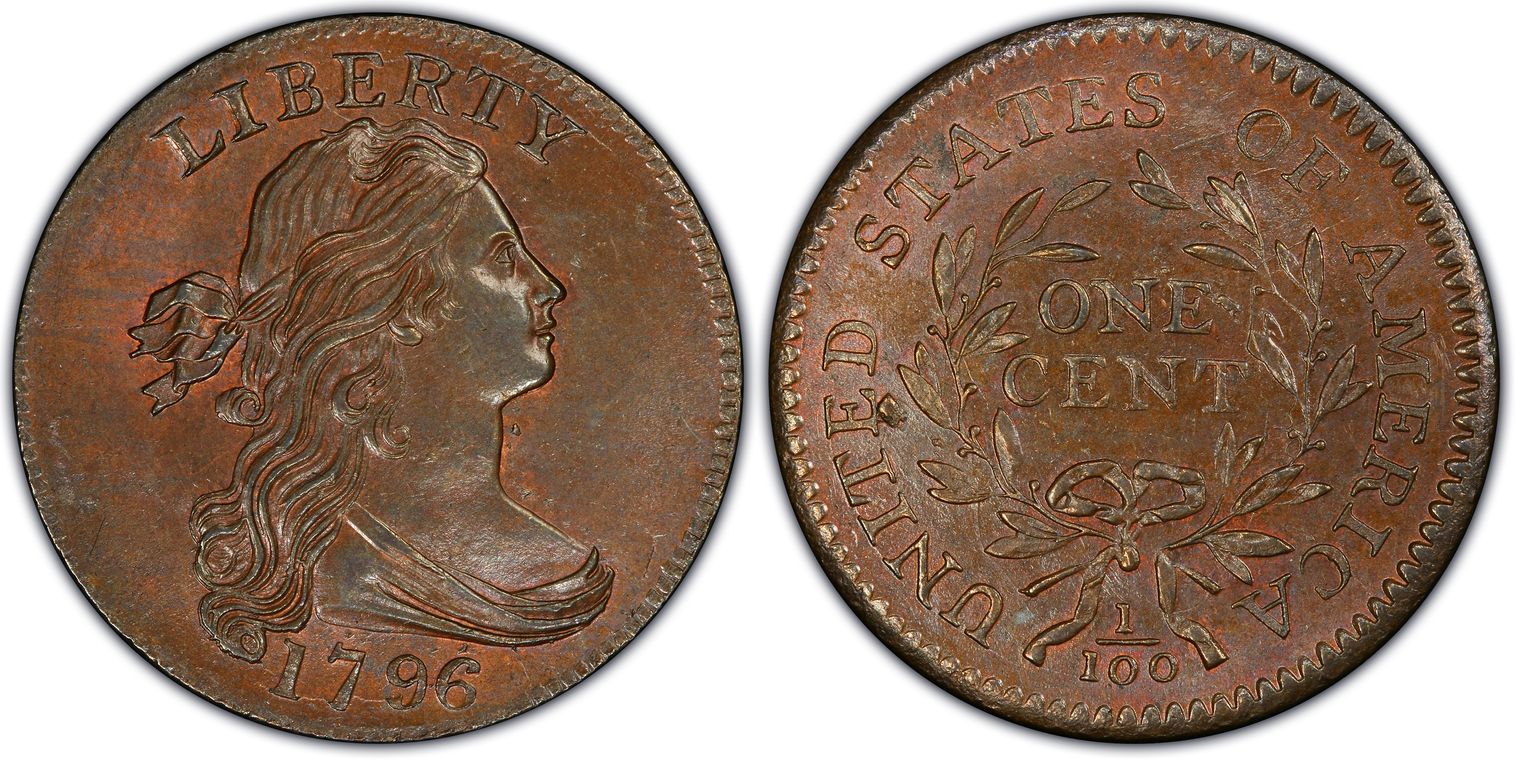1796 1C Draped, Reverse of 1794, BN
Share

The 1796 1C Draped Bust, Reverse of 1794, BN (Regular Strike) is one of the most captivating and sought-after coins among early American numismatics. Minted in the Philadelphia Mint, this coin is a testament to the early design transitions in U.S. coinage, showcasing the young nation's evolving artistic and manufacturing capabilities. From a numismatist's perspective, this particular cent is a prized find due to its historical context, unique design features, and the challenges it presents to collectors in terms of scarcity and condition.
Rarity and Mintage
The 1796 Draped Bust cent with the Reverse of 1794 is notably rare. The coin features the Draped Bust obverse design created by famed engraver Robert Scot, paired with a reverse die initially used in 1794. According to PCGS CoinFacts, this coin's mintage is convoluted within the total mintage of all cents produced in 1796, which is approximately 109,825. However, a much smaller fraction of these bear the Reverse of 1794 die pairing, adding to its exclusivity.
Numismatic Value
Collectors and investors are enthusiastic about this coin, and its rarity is reflected in its market value. Although the condition varies, even examples in lower-grade conditions command significant premiums. For instance, a well-known sale of a similar coin occurred in an auction, fetching a price significantly higher than its baseline, drawing attention from buyers globally. Prices can vary widely based on the coin's grade and eye appeal, but high-grade specimens have been known to sell for upwards of $10,000.
Historical Significance
This coin comes from an era that bridges different chapters in early U.S. minting history. The creation of the 1796 Draped Bust cent coincided with coinage developments that marked the transition from more rudimentary designs to a more classical style, influenced by European aesthetics. The reverse of the coin, still carrying elements from 1794, highlights the iterative process the U.S. Mint underwent, offering insights into operational practices and design philosophies during the 18th century.
Collector Insights
To a devoted numismatist, the 1796 Draped Bust cent holds not just monetary value, but also intrinsic historical and artistic importance. The intrigue lies in the coin's ability to narrate the story of America's infancy in minting capabilities and its strive for establishing a national identity through currency. While collecting this coin can be a complex endeavor due to the variations in dies used and conditions available, it represents a significant accomplishment and addition to any early American coin collection.
PCGS Details
For those seeking specific PCGS details, the coin is cataloged under the PCGS #1404. Due to its particular attributes and history, obtaining a well-documented piece with authenticated grading provides assurance of its provenance and condition, crucial for serious collectors. In summary, the 1796 1C Draped Bust, Reverse of 1794, BN is revered not only for its limited mintage and scarcity but for the rich narrative it offers on early American numismatic practices. As collectors continue to pursue these early American rarities, the 1796 Draped Bust cent remains a cornerstone of historical and monetary study.





